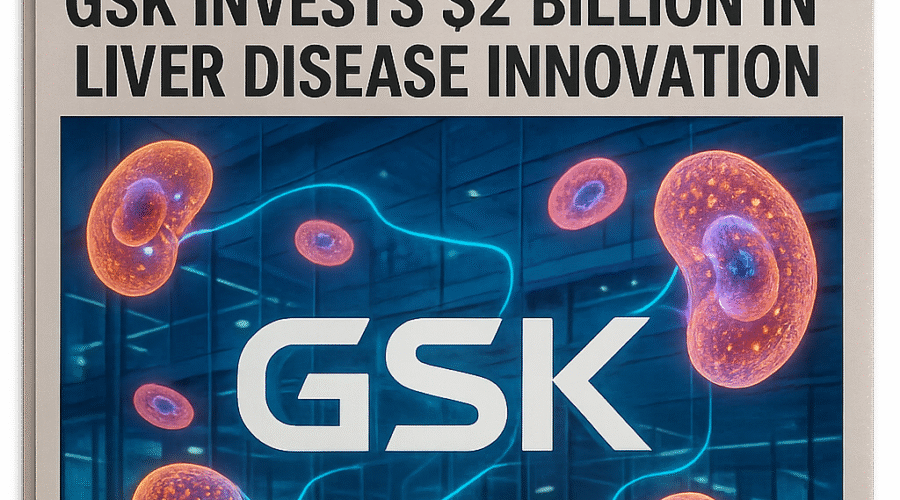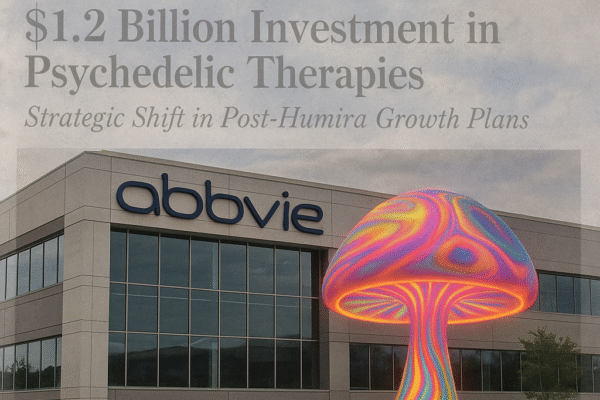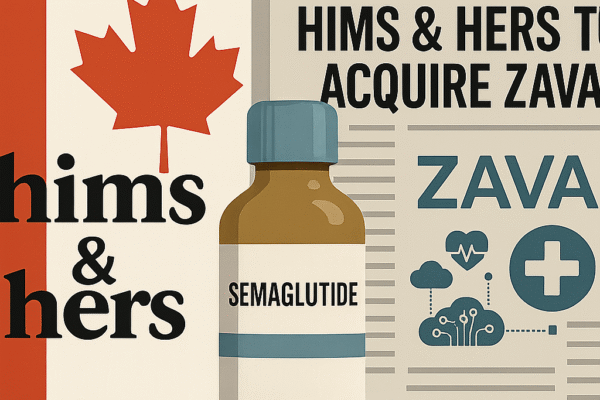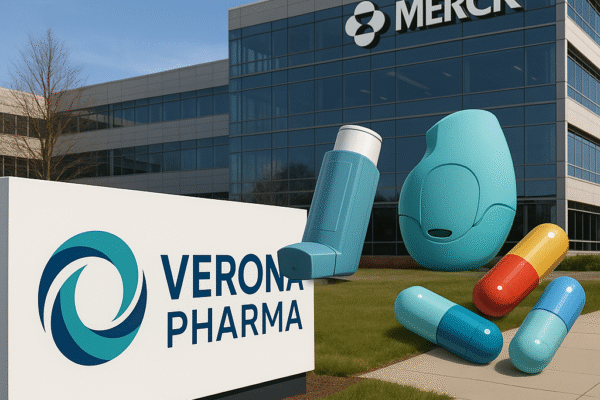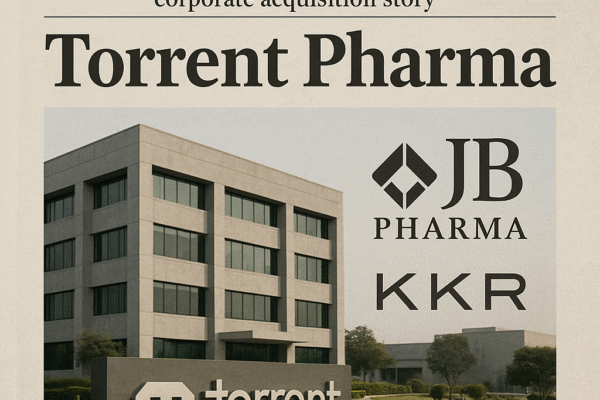In a bold move to secure leadership in the rapidly evolving hepatology sector, GSK announced a $2 billion acquisition of Boston Pharmaceuticals’ efimosfermin alfa on May 14, 2025. This phase III-ready fibroblast growth factor 21 (FGF21) analog positions the British pharma giant at the forefront of the $40 billion steatotic liver disease (SLD) market, combining immediate pipeline expansion with long-term strategic positioning against obesity-linked metabolic disorders[1][6][9].
Deal Architecture and Immediate Market Impact
The transaction structure reveals GSK’s risk-mitigated approach: a $1.2 billion upfront payment supplemented by $800 million in success-based milestones, with tiered royalties owed to Novartis Pharma AG[1][5][9]. This comes just 24 hours after GSK discontinued a $625 million oncology asset, signaling sharpened focus on metabolic and fibrotic diseases[2][7]. Market response was cautiously optimistic, with GSK shares climbing 1.4% to £1,382.00 by mid-morning trading, adding £800 million to its £56.98 billion market cap[2][5].
Therapeutic Differentiation in a Crowded Field
Efimosfermin’s once-monthly subcutaneous dosing and direct antifibrotic action create multiple competitive moats. Phase II data (NCT06920043) demonstrated 45.2% of patients achieved ≥1-stage fibrosis improvement vs 20.6% placebo, with 60% showing MASH resolution[2][9][11]. This outperforms Madrigal’s first-approved THR-β agonist Rezdiffra (30% fibrosis improvement) and positions favorably against Lilly’s tirzepatide (63.1% MASH resolution at 10mg)[11][15].
| Asset | Company | Mechanism | Dosing | Phase II Efficacy |
|---|---|---|---|---|
| Efimosfermin | GSK | FGF21 analog | Monthly SC | 45.2% fibrosis improvement |
| Tirzepatide | Eli Lilly | GLP-1/GIP agonist | Weekly SC | 63.1% MASH resolution |
| Semaglutide | Novo Nordisk | GLP-1 agonist | Weekly SC | 34% MASH resolution |
Strategic Rationale: Beyond Monotherapy Potential
GSK’s hepatology strategy leverages three synergistic pillars: 1) Efimosfermin’s antifibrotic action, 2) GSK’990 siRNA targeting hepatic fat metabolism, and 3) existing chronic hepatitis B pipeline[7][9][12]. Early combinatorial studies suggest potential 70% fibrosis reversal when pairing FGF21’s metabolic regulation with RNAi’s precision targeting[9][14]. This positions GSK to dominate both viral and metabolic liver disease markets projected to reach $58 billion collectively by 2030[6][13].
“Efimosfermin’s monthly dosing and tolerability profile could redefine treatment paradigms,” noted GSK CSO Tony Wood. “When combined with our siRNA platform, we’re building an unassailable position in hepatology.”[9]
Financial Engineering and Risk Mitigation
The milestone-driven payment structure aligns with GSK’s post-pandemic capital allocation strategy. With $800 million contingent on Phase III success (NCT pending) and 2029 commercialization, the deal preserves 60% of potential payout for de-risked development stages[5][9]. Royalty obligations to Novartis are capped at 12% of net sales, creating favorable margin structure compared to Lilly’s 15% royalty deal with OliX[5][6].
Market Disruption and Future Outlook
Analysts project efimosfermin could capture 35% of the $28 billion MASH market by 2032, generating peak sales of $9.8 billion[6][13]. The drug’s extended half-life (14 days vs native FGF21’s 2 hours) and low immunogenicity position it as preferred option over daily oral therapies like Rezdiffra[11][14]. With Phase III trials initiating Q3 2025 and BLA submission targeted for Q4 2028, GSK is poised to launch simultaneously in US/EU/Japan markets[1][9].
Competitive Countermoves and Regulatory Landscape
The acquisition forces rivals to accelerate development timelines. Lilly recently fast-tracked tirzepatide’s SYNERGY-NASH Phase III trial by 8 months, while Novo Nordisk is reformulating oral semaglutide for enhanced liver targeting[15][16]. FDA’s 2024 MASH guidance emphasizing histologic endpoints plays to efimosfermin’s strengths, though post-marketing requirements for long-term cardiovascular outcomes may add $150 million in development costs[9][13].
Conclusion: A New Era in Hepatology
GSK’s strategic pivot positions it to lead the SLD market through 2030. By combining efimosfermin’s best-in-class efficacy with financial discipline and pipeline synergy, the company addresses a critical unmet need for 115 million global patients while creating shareholder value. As Dr. Sophie Kornowski of Boston Pharma noted, “This partnership accelerates our shared mission to transform liver disease treatment.”[1] With first-mover advantage in advanced fibrosis reversal, GSK is rewriting the rules of metabolic drug development.
Sources
https://www.biospace.com/press-releases/gsk-to-acquire-efimosfermin-a-phase-iii-ready-potential-best-in-class-specialty-medicine-to-treat-and-prevent-progression-of-steatotic-liver-disease-sld, https://www.clinicaltrialsarena.com/news/gsk-to-spend-2bn-on-phase-iii-liver-disease-drug-acquisition/, https://www.investing.com/news/sec-filings/gsk-to-acquire-new-liver-disease-treatment-93CH-4045173, https://www.fiercebiotech.com/biotech/gsk-takes-a-1b-dive-into-nash-penning-rnai-pact-target-arrowhead-pharmaceuticals, https://www.ndtvprofit.com/business/gsk-buys-liver-drug-for-up-to-2-billion-to-boost-pipeline, https://www.ainvest.com/news/gsk-2-billion-bet-liver-disease-breakthrough-strategic-play-40b-market-2505/, https://www.fiercebiotech.com/biotech/gsk-pays-12b-upfront-boston-pharmaceuticals-lead-liver-disease-drug, https://www.europeanpharmaceuticalreview.com/news/255690/gsk-to-expand-hepatology-pipeline-with-potential-best-in-class-therapy/, https://www.gsk.com/en-gb/media/press-releases/gsk-to-acquire-efimosfermin-a-phase-iii-ready-potential-best-in-class-specialty-medicine-to-treat-and-prevent-progression-of-steatotic-liver-disease-sld/, https://us.proteogenix.science/product/efimosfermin-biosimilar-anti-fgf21-fusion-protein-research-grade/, https://medcitynews.com/2025/05/gsk-fatty-liver-disease-mash-boston-pharmaceuticals-efimosfermin-fgf21/, https://gskusmedicalaffairs.com/hepatology/pipeline/, https://www.imarcgroup.com/non-alcoholic-steatohepatitis-market, https://www.frontiersin.org/journals/pharmacology/articles/10.3389/fphar.2025.1510322/full, https://www.fiercepharma.com/pharma/eli-lilly-touts-tirzepatide-midstage-nash-win-despite-lesser-anti-scarring-effect, https://gut.bmj.com/content/gutjnl/early/2020/05/17/gutjnl-2019-319104.full.pdf, https://www.fiercepharma.com/pharma/after-phase-2-flop-novo-nordisk-next-list-fail-nash

